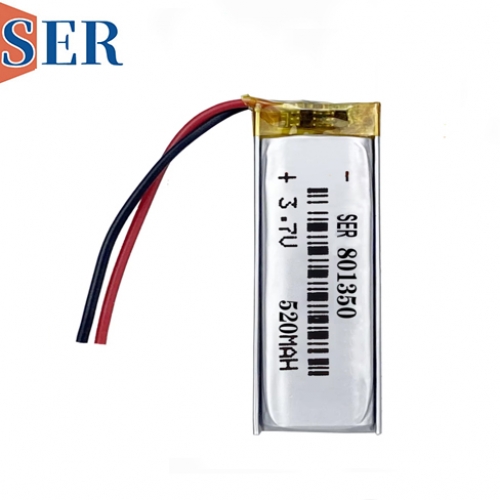CP305050 3.0V 1500mAh Li-ion Ultra-Thin Batteries and Their Role in Wireless Sensor Applications
CP305050 3.0V 1500mAh Li-ion Ultra-Thin Batteries and Their Role in Wireless Sensor Applications
In the realm of portable electronics and wireless devices, batteries play a pivotal role, serving as the lifeblood that keeps these gadgets functioning seamlessly. Among the various battery technologies available today, Lithium-ion (Li-ion) batteries have emerged as a preferred choice due to their high energy density, relatively light weight, and the ability to maintain a charge for extended periods. However, not all Li-ion batteries are created equal, and one specific type, the CP305050 3.0V 1500mAh non-rechargeable Li-ion ultra-thin battery, stands out for its unique characteristics and intended applications. This article delves into the reasons why these batteries are non-rechargeable, their advantages in wireless sensor applications, and the implications of this design choice.
Introduction to CP305050 3.0V 1500mAh Non-Rechargeable Li-ion Battery
The CP305050 3.0V 1500mAh Li-Mno2 battery ultra-thin battery type is a specialized type of battery designed for applications where rechargeability is not a requirement or feasible. As its name suggests, this battery boasts a compact form factor (30mm x 50mm) and a slim profile, making it ideal for space-constrained devices such as wireless sensors, wearable technology, and other miniature electronics. Despite its small size, it packs a considerable punch with a nominal voltage of 3.0V and a capacity of 1500mAh, ensuring reliable power delivery for extended operation cycles.
Understanding the Non-Rechargeable Nature
Chemical Composition and Construction
At the heart of every Li-ion battery lies a complex electrochemical system that facilitates the storage and release of energy. In rechargeable Li-ion batteries, this system is designed to withstand repeated cycles of charging and discharging without significant degradation. However, the CP305050 3.0V 1500mAh battery is classified as non-rechargeable due to specific design choices in its chemical composition and construction.
One of the primary reasons for its non-rechargeable nature lies in the type of electrolyte used and the anode material. In many rechargeable Li-ion batteries, the anode (negative electrode) is made of carbon-based materials that can reversibly intercalate and de-intercalate lithium ions during charging and discharging. However, in non-rechargeable Li-ion batteries like the CP305050, the anode material may be optimized for high energy density but lacks the durability required for repeated cycling. Additionally, the electrolyte composition might not be as robust, making it prone to degradation or even dangerous reactions if attempted to recharge.
Safety Considerations
Another crucial factor behind the non-rechargeable design is safety. Recharging a battery not designed for it can lead to a range of issues, including overheating, fire, or even explosion. Non-rechargeable Li-ion batteries often employ materials and designs that prioritize stability and safety over rechargeability. By eliminating the need for recharging, manufacturers can ensure that these batteries operate within their safe operating limits, minimizing the risk of accidents.
Advantages in Wireless Sensor Applications
Wireless sensors have become ubiquitous in today's technology landscape, powering a diverse range of applications from smart homes and buildings to industrial monitoring and healthcare. The CP305050 3.0V 1500mAh non-rechargeable Li-ion ultra-thin battery offers several advantages that make it an attractive choice for these applications:
Longevity and Reliability
One of the key advantages of non-rechargeable batteries is their longevity and reliability. Since they are not subjected to the wear and tear associated with repeated charging cycles, they tend to have a more predictable and extended lifespan. This is particularly important in wireless sensor applications where reliability and consistency are paramount. The CP305050 battery, with its 1500mAh capacity, can provide ample power for extended periods, reducing the need for frequent battery replacements or maintenance.
Cost-Effectiveness
Another significant advantage of non-rechargeable batteries is their cost-effectiveness. While rechargeable batteries may initially seem more economical due to their ability to be reused, the long-term costs associated with charging infrastructure, maintenance, and eventual battery degradation can quickly outweigh the benefits. In contrast, non-rechargeable batteries like the CP305050 offer a straightforward and cost-effective solution, eliminating the need for charging infrastructure and reducing the overall total cost of ownership.





